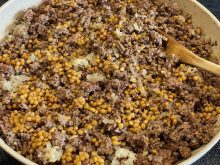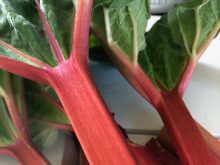The knife is among the oldest of kitchen tools and as relevant today as ever.
A simple chef’s knife can re-place a myriad of new fangled kitchen gadgets. The perfect knife should fit your hand, feel substantial but not heavy and be evenly balanced.
The chef’s knife or French knife is the most often used.
The blade is eight to 12 inches (20–30 cm) long and 1 1/2 to two inches (3.5–5 cm) at the heel tapering to a point at the tip.
An equally balanced knife has a blade that is the same weight as the handle. Test it by balancing the knife on your finger. Knives with heavier blades are used for heavy-duty tasks such as chopping through bones.
Read Also

Nutritious pork packed with vitamins, essential minerals
Recipes for pork
The main parts of a knife are the blade and handle. When the blade extends through the handle, it’s called a full tang knife.
American knives have beveled edges, which are sharpened on both sides. A Japanese knife blade is sharpened on one side only.
The most expensive and finest knives are made from meteorites.
However, price is not the defining factor in selecting the right knife for you.
Ask yourself how hard it will work and what you want to spend.
There are subtle differences with knives. A good quality knife has a spine that is thicker than the edge, with the thickness tapering toward the tip.
A blade that continues through the handle feels stronger and better balanced and has better control.
Sharpening and honing tools
More accidents happen with dull knives. Knife blades are given an edge on a sharpening stone and maintained between sharpenings with a honing steel.
Use a honing steel by drawing the knife slowly down the steel slowly at a 20 degree angle two or three times on each side of the blade. The honing steel aligns the edge rather than sharpening it.
The sharpening stone can be a water stone, oil stone or ceramic stone. Hold the blade at a 20 degree angle to the stone and draw it across the stone several times from tip to heel or heel to tip without stopping. Repeat on the second edge.
It is important is to keep the surface of the sharpening stone flat. There is a tendency for it to wear away in the mid-section, creating a swale. A lapping stone is available for the sharpening stone to maintain the proper flatness.
Draw lines horizontally, vertically and diagonally with a pencil across the sharpening stone. After using the lapping stone on the sharpening stone, all lines should be equally worn away. Continue to use the lapping stone until all pencil lines are erased.
Electric knife sharpeners run the risk of over sharpening and wearing away the blade.
Home cooks should have their knives professionally sharpened from time to time to maintain a proper edge.
Safety, care and etiquette
Knives should not be put in the dishwasher but should be hand washed in soapy water. Wooden handles can dry out and warp and edges can be damaged by rubbing against other cutlery or by temperature extremes.
Always hold a knife by its handle. Never attempt to catch a falling knife. Always wear shoes in the kitchen when working with knives.
When passing a knife to someone else, lay it down on a work surface and let the other person pick it up.
Do not allow the blade or handle of a knife to extend over the edge of a table. If you must carry a knife, hold it straight down at your side with the sharp edge facing behind you.
When using the flat side of a knife, such as smashing a clove of garlic, have the edge away from you.
Do not use knives to open bottles or loosen drawers. Do not leave knives in places where they cannot be easily seen, such as in a sink full of water.
One knife cannot handle all jobs. You may want a smaller specialized knife for boning or paring.
Safe storage
- Store knives in a knife block rather than loose in a drawer.
- Be sure knives are dry before storing. Carbon steel blades may rust.
- Knives with carbon steel blades and wooden handles should be stored with sharp side down so no water remains inside the handle.
- When storing a knife for an extended time, wrap it in newspaper. The oil in the ink helps prevent rust over time.
Sarah Galvin is a home economist, teacher and farmers’ market vendor at Swift Current, Sask., and a member of Team Resources. She writes a blog at allourfingersinthepie.blogspot.ca. Contact: team@producer.com.

















